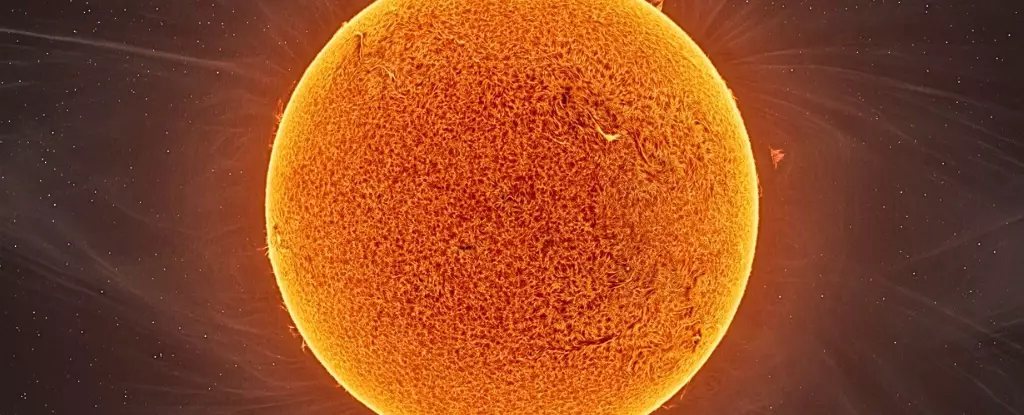In an extraordinary revelation that flickers like distant starlight, new research has unearthed profound insights into the enigmatic lives of stars through the phenomenon known as starquakes. These grand celestial events occur when gas bubbles in stars burst, creating vibrations that ripple across their massive bodies. Far from being mere cosmic fireworks, starquakes serve as powerful tools that unravel the complex histories and inner workings of stars—insights that are startlingly more intricate than previously posited. The recent analysis focusing on the giant stars within the M67 cluster, located nearly 3,000 light years away, marks a pivotal moment in our understanding of stellar evolution.
Utilizing the data collected from Kepler’s renowned K2 mission, this research showcases a groundbreaking approach: tracking the evolutionary trajectory of stars throughout their giant phase. It reveals a theme that is hauntingly resonant—when stars reach a certain stage of development, they become stuck in a cyclical loop, “playing the same part of their tune,” as their outer layers become sensitive to changes occurring deep within. It is as if these cosmic giants are trapped in a moment of sound, underscoring an exquisite truth: the music of the stars contains stories, histories, and secrets waiting to be heard.
A New Perspective on Stellar Evolution
Traditionally, star evolution has been shrouded in unanswered questions. What determines the life cycle of a star? What happens as it ages? By decoding the symphonic frequencies emitted by these celestial masterpieces, researchers have begun to challenge long-held assumptions. The findings suggest that the resonant frequencies present within giant stars not only reveal their immediate conditions but also act as a key to understanding their past lives and the evolution of the galaxy itself.
The study of clusters like M67 is crucial, as these stellar groups provide a unique environment where the fundamental characteristics—age, chemical composition—are shared among the stars. This shared context enables scientists to track their respective journeys through time, much like following a family tree. Each star in M67 resonates a distinct melody, reflecting its internal architecture shaped by age and mass.
Deciphering the Cosmic Melody
At the heart of this revelation lies the concept of “small spacing,” a cluster of resonant frequencies that previously appeared to yield little information, especially in red giants that have exhausted hydrogen in their cores. The study’s findings shattered this perception, showcasing that these frequencies offer unexpected glimpses into internal stellar activity. As the hydrogen-burning shell surrounding the stellar core thickens and moves inward during the life cycle, the small spacings reflect these changes.
What remains particularly astonishing is the observation of “stalling frequencies,” reminiscent of a cosmic record stuck on a note. This stalling suggests a profound increase in complexity within the star’s dynamic engine—an interaction between layers that provide clues about not only stellar mechanics but also the ambient conditions in which these stars exist.
As these stars become increasingly massive, their outer envelope delves further into turbulent territories, affecting the reverberation of sound waves. This intersection of sound and fury demonstrates a new frontier in stellar astrophysics, offering fresh methods for identifying star ages and compositions with unparalleled precision.
The Galactic Narrative Through Starquakes
Stars are not merely celestial objects but are rather ancient storytellers bearing witness to the cosmic narrative of the Milky Way. Merging galaxies and their subsequent stellar formations paint a picture of galactic history that has been grossly oversimplified. This newfound ability to examine the “songs” of stars allows astronomers to refine their estimates of age and formation, illustrating a more nuanced understanding of galactic evolution.
The discoveries from M67 offer a glimpse into our own Sun’s destiny, illuminating the transformations it will undergo over the coming billions of years. In this way, starquakes do not only inform us about the past; they provide a mirror reflecting the future of our solar system, amplifying the importance of studying these stellar phenomena.
The depth of insight afforded by starquakes encourages us to revisit historical data with sharper minds, prompting a symphonic reevaluation of existing star catalogs. We stand at the precipice of discovery, equipped with a new auditory lens to listen to the whispers of the cosmos, rewriting the astronomical score in revolutionary ways.
In a time when we are often lost in the noise of everyday life, the discovery of the musical essence of stars reinstates a sense of wonder. As we delve deeper into the mysteries of the universe, the subtle melodies of starquakes will guide us—reminding us that the cosmos, in all its vastness, is intricately connected in an everlasting symphony.


Leave a Reply